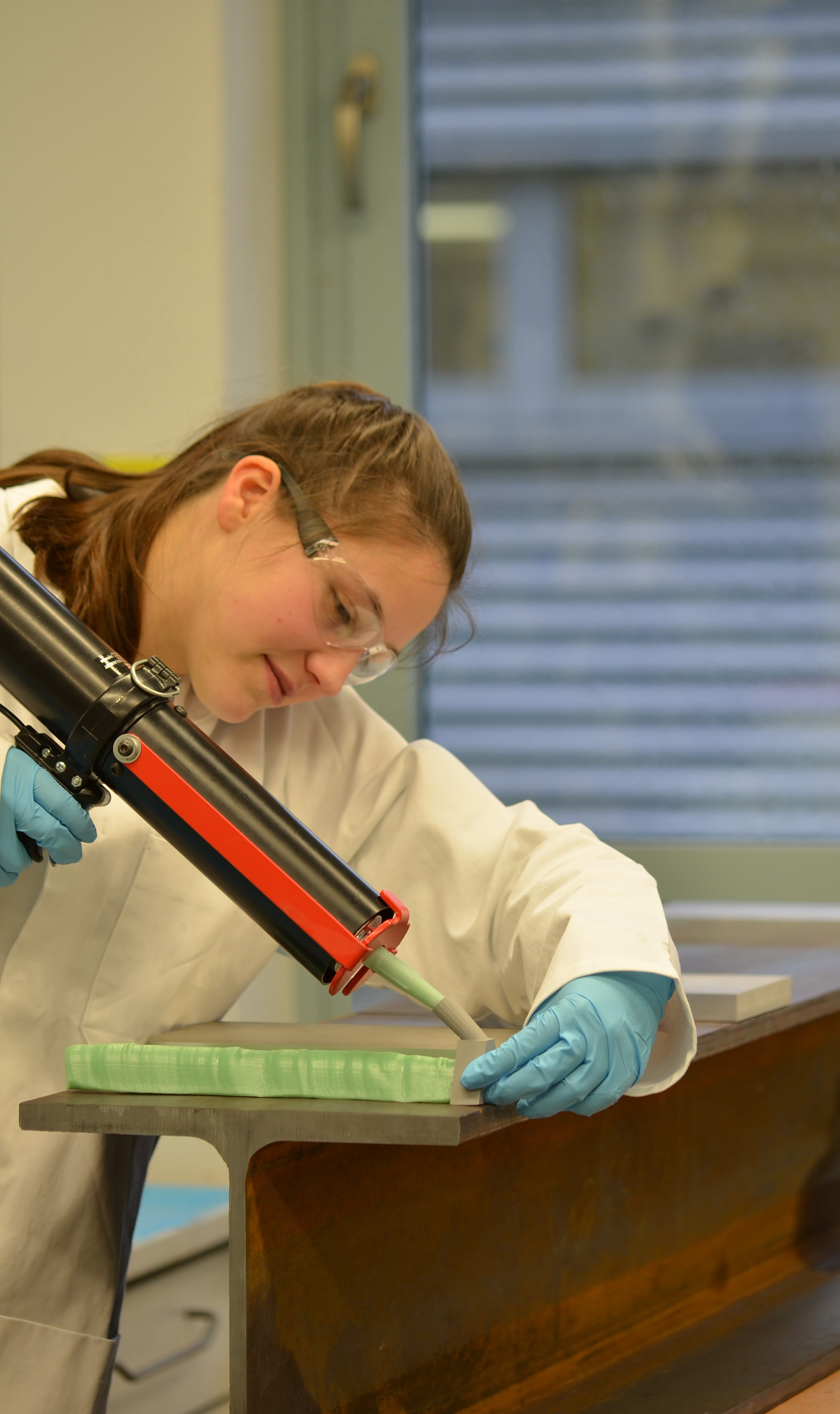
This is a modal window.

This is a modal window.
This area of Fraunhofer IGP addresses both current joining issues of lightweight and composite construction and the development and adaption of production methods for fibre composite parts. Further main research focuses are the effects of ageing on materials, adhesive bonded joints and coatings by means of laboratory ageing in an artificial climate.

In cooperation with the accredited test laboratory at the Fraunhofer IGP, materials, joints and coating systems are tested and qualified under standardised conditions. In addition, new testing methods for special applications are developed and employed.
In the field of adhesive bonding technology, the range of services offered by Fraunhofer IGP extend from the bonding-optimised design of parts and assemblies, through the planning and dimensioning of bonded joints right up to the development and qualification of the whole bonding process and the joint.
The focus in the field of fibre composite technology lies on the holistic optimisation of large fibre composite constructions such as the rotor blades of wind turbines, ship superstructures and applications in civil engineering. The work extends from the development of flame-resistant materials through production engineering up to the determination and calculation of indicators.
In the field of corrosion protection and artificial ageing, Fraunhofer IGP’s focus in on the development and qualification of innovative corrosion protection systems with improved properties and the identification of ageing influence.
Since 2020, the individual divisions of the former Adhesive Bonding Technology, Fibre Composite Technology and Corrosion Protection group have formed their own teams. The Adhesive Bonding Technology team is headed by M.Sc. Linda Fröck, while M.Sc. Stefan Schmidt heads up Fibre Composite Technology. Dr-Ing. Michael Irmer leads the Coating, Weathering and Corrosion Protection team. The teams all come under the umbrella of the New Processes and Materials department, which is overseen by Dr-Ing. Nikolai Glück.
Inspection methods for recurrent testing of highly elastic thick-film and structural bonds in shipbuilding applications
As a result of increasing lightweight construction requirements, adhesive technology is becoming more and more important as a joining process in shipbuilding. However, a lack of long-term experience in the maritime sector stands in the way of integrating adhesive technology into production. The aim is to find suitable inspection procedures and intervals for ongoing operations and to expand the experience with adhesive joints in the maritime sector. In order to achieve this, imperfections in adhesive joints typical for shipbuilding are analysed with regard to their damage potential and impact on service life. Based on the data obtained, meaningful inspection intervals are determined for the use of adhesive joints in shipbuilding. In addition, non-destructive
inspection methods (NDT) for use in the shipyard as well as at sea are compiled and checked for applicability.
Non-combustile, fibre-reinforced composite components on cold-curing inorganic matrix systems
In principle, the use of composite materials in shipbuilding is extremely promising due to the great freedom of design, high corrosion resistance and considerable weight savings. However, strict fire protection regulations prevent the use of conventional fibre-reinforced plastic composites (FRP) with organic matrices, which burn with the release of heat in case of fire. The solution to this problem is to substitute the plastics with inorganic, non-combustible matrix systems. Conventional manufacturing processes for FRPs cannot, however, be easily transferred to the inorganic materials.
The AnorKomp project focuses on the optimisation and processing of inorganic systems and processes for the production of corresponding composite components.
Development of foil coating systems and their application systems and their applications techniques as corrosion protection for offshore wind farms
Offshore Wind Turbines are constantly exposed to wind, water and salt. The protection of the steel structures is guaranteed by high-performance coating systems. The application of these liquid coating materials is associated with enormous effort due to environmental conditions and quality monitoring in the coating process. With the development of a foil coating system, the demands on technical hall equipment can be reduced considerably. For example, there is no need for costly ventilation systems or explosion-proof areas. The development of an automated application system is in the pipeline. In combination with the foil coating system, the need for quality monitoring is significantly reduced. Moreover, fewer employees will be needed to work in hazardous areas.
Testing laboratory